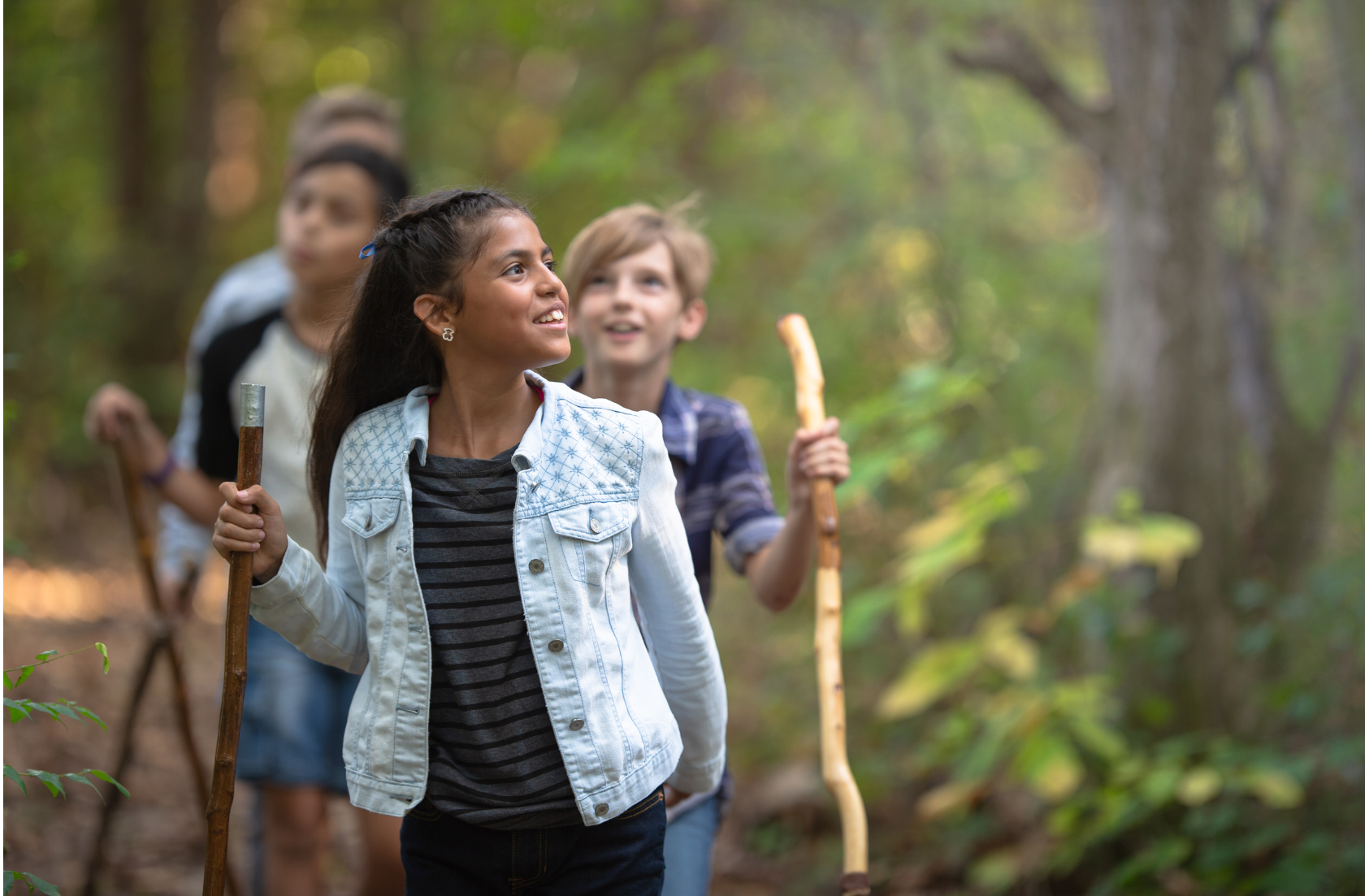September 21, 2023
By Michael Collins, Teravana
According to Harvard University, the 1.8 billion youth between the ages of 10 and 24 make up the most populous age group in the world. Surveys have shown today’s youth are spending less and less time outside. Every day, tragedy flies off the TV screen, along with dire facts and fiction about the state of our planet. So, rather than point out that a lot of kids are hanging out in their rooms, we should provide as much opportunity as we can to welcome them outside.
Because nature changes rapidly, it attracts and stimulates our attention, increasing the capacity to retain information and ideas, a first step in cognitive development, according to Bloom’s taxonomy. Unlike a classroom, the experience of nature’s detail inspires and encourages children’s need to make sense of and comprehend what they’re seeing and experiencing (Blair, 2009).
The effects on the learning process are a bonus compared to the health benefits. The Children and Nature Network discusses how “access to safe, natural areas can enhance children’s physical and mental health, from cardiovascular vitality and weight management to reducing stress and ADHD symptoms.” Habits learned in school can be transferred to life outside of school and on into adulthood.
Teachers find learning goes better when nature is a teaching aid. Let’s not forget the well-being of our teachers! According to a study by the State Education and Environment Roundtable (SEER), 95% of teachers from a study across 14 K-12 schools reported Increased enthusiasm and commitment toward teaching and how outdoor education revitalized their interests in education and their profession (compared to a traditional framework).

Environmental education is a proven way to enhance learning and yield these many benefits. Students grow accustomed to seeing science and different theories unfold before their eyes, and they are able to draw conclusions based on living evidence. For example, a lesson about the monarch butterfly teaches the life cycle from caterpillar to adult butterfly and its amazing migratory journey from summer breeding grounds to overwintering locations. Every year, from October through early March, they migrate to the California coast (along with other routes through North America and down into Mexico). The monarchs instinctively know where to go. But as a result of global warming, this instinct has been getting thrown off. Today they are diminishing and have had to alter their migration.
When students see a monarch in its habitat, feeding off milkweed and native plants, the story comes together. After learning and seeing, there might be a call to action by a student or students, not because someone told them to get involved but because they want to do something about the endangered monarch. And that sequence of events could never happen solely in a classroom.
Disadvantaged schools are often the last to incorporate environmental education. Students from families striving for economic stability benefit more from time in nature, especially academically, compared to higher-income schools. Young people need options. The trees and gardens will also appreciate the extra attention.
REFERENCES
Blair, Dorothy. “The Child in the Garden: An Evaluative Review of the Benefits of SchoolGardening.” J Environ Educ 40 no2 Wint. 2009.
https://www.kindsnatur.at/wp-content/uploads/2017/06/The-child-in-the-garden.pdf
“Youth: Investing in the Future.” A Global Health and Learning Incubator at Harvard University. Harvard University.
https://gheli.harvard.edu/youth-investing-in-the-future
The Children and Nature Network. www.childrenandnature.org
Hoody, Linda L, and Gerald A. Lieberman. “Using the Environment as an Integrating Context for Learning.” State Education and Environment Roundtable. Science Wizards. 1998.